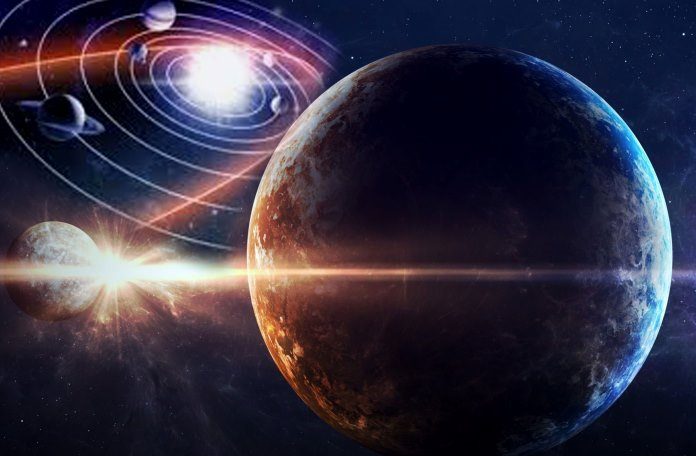 Il misterioso Pianeta 9 potrebbe essere una superTerra con una massa di cinque volte quella della Terra ed essere un po’ meno lontano di quanto si pensi, distante dal Sole circa 60 miliardi di chilometri. Lo descrivono così, sulla base di nuove simulazioni, Konstantin Batygin e Mike Brown, entrambi del California Institute of Technology (Caltech), che nel 2016 avevano pubblicato il primo articolo a favore dell’ipotesi dell’esistenza di questo possibile abitante dei confini del Sistema Solare. Da allora il Pianeta 9 è tornato più volte a far parlare di sè: c’è chi ha suggerito che fosse noto fin dal Medioevo e chi ritiene che non sia affatto solo.
Il misterioso Pianeta 9 potrebbe essere una superTerra con una massa di cinque volte quella della Terra ed essere un po’ meno lontano di quanto si pensi, distante dal Sole circa 60 miliardi di chilometri. Lo descrivono così, sulla base di nuove simulazioni, Konstantin Batygin e Mike Brown, entrambi del California Institute of Technology (Caltech), che nel 2016 avevano pubblicato il primo articolo a favore dell’ipotesi dell’esistenza di questo possibile abitante dei confini del Sistema Solare. Da allora il Pianeta 9 è tornato più volte a far parlare di sè: c’è chi ha suggerito che fosse noto fin dal Medioevo e chi ritiene che non sia affatto solo.
La prima ricerca, pubblicata sull’Astronomical Journal, ha stimato in 1 probabilità su 500 il fatto che lo strano comportamento dei corpi celesti della zona oltre l’orbita di Nettuno nota per essere popolata da asteroidi e pianeti nani, chiamata fascia di Kuiper, sia dovuto alla nostra distorta prospettiva di osservazione invece che all’influenza gravitazionale del fantomatico Pianeta 9. “Anche se l’analisi non dice niente sull’esistenza o meno del pianeta – commenta Brown – indica però che la nostra ipotesi giace su solide fondamenta”.
Il secondo studio, che in via di pubblicazione sulla rivista Physics Reports, fornisce migliaia di modelli al computer sull’evoluzione della parte più esterna del Sistema Solare, insieme a nuove stime che riducono le dimensioni del pianeta e lo collocano più vicino al Sole di quanto prima ipotizzato. “Penso – rileva Batygin – che entro il prossimo decennio riusciremo a provare o meno la sua esistenza”.
Planet 9 could be a super-Earth
The mysterious Planet 9 could be a super-Earth with a mass five times that of the Earth and be a little less distant than you think, about 60 billion kilometers away from the Sun. This is how they describe, based on new simulations, Konstantin Batygin and Mike Brown, both from the California Institute of Technology (Caltech), who in 2016 published the first article in favor of the hypothesis of the existence of this possible inhabitant of the system boundaries Solar. Since then Planet 9 has returned several times to talk about itself: some have suggested that it was known since the Middle Ages and those who believe that it is not alone.
